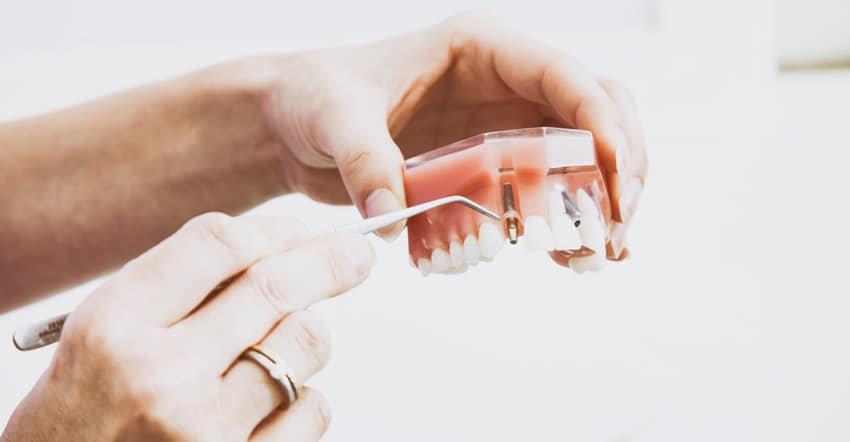
Dentures
Dentures are a prosthetic replacement for missing teeth. Also known commonly as false teeth.
A mould is taken of the patient’s mouth and using a plastic resin an artificial support is created. Prosthetic teeth are attached to the support. Together the support and the teeth are what we call dentures. The dentures use the oral cavity of the gums and light suction to hold themselves in place. They allow a patient who has lost a number of teeth in a row to fill the gap and provide the same function as original teeth.
Types of Dentures
It can be either partial or full, depending on how many teeth have been lost.
If all the patient’s original teeth have been lost then a full set of prosthetic teeth are required. These enable the patient to regain all the functions that teeth provide, chewing food, correct speech, natural facial aesthetic, and the confidence of a full toothy smile.
If only some teeth are lost it may be possible to replace those with bridge.which will attach to the adjoining teeth for support. If a number of teeth in a row are lost a partial denture is required.
The partial denture is designed to fit in between the existing teeth.
Immediate dentures:
An immediate denture is a complete denture or partial denture inserted on the same day, immediately following the removal of natural teeth. The most important factor is that you will never need to appear in public without teeth.
Types of denture: based on material used :
- Metal Partial Denture
- Acrylic Partial Denture
- Acrylic Full Denture
- Valplast Denture
If your dentures ever become damaged, either it becomes loose or it cracks or breaks, don’t try to repair or adjust it yourself. Instead, go to see your dentist immediately.
- Continue to brush and floss your teeth, and brush your tongue, but be sure to avoid the extraction site. Doing so will help prevent infection.

